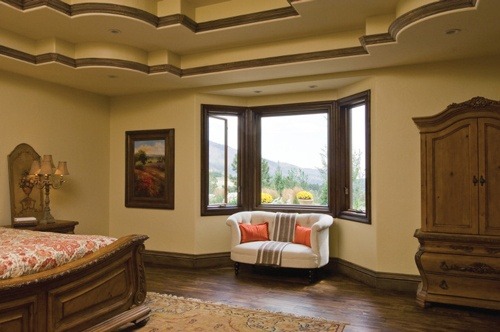MENU



Bay windows consist of three or more individual units, assembled at an angle to make one window. Standard angles are 30 or 45 degrees, although custom sizing is available.
When choosing the right bay window replacement, chances are you’ll probably want to stick with the size of the window you’re replacing. But, since some window openings can be altered, that won’t always be the case.
Renewal by Andersen can help you choose the best bay window replacement, but here are two issues to consider. The more details you decide on beforehand, the easier it will be to make your purchase.
Standard Window Frame Materials
Fibrex-An Even Better Option
Fibrex material, a product of Renewal by Andersen Windows, is quite possibly the best available option. Why? It’s simple. Fibrex is:
Energy Efficiency
In today’s world of high utility costs, energy-efficient windows are more important than ever before. Double and triple-pane glass is manufactured with either argon gas or air between each layer. This securely insulates the entire window and effectively prevents condensation build-up.
In addition, you usually have the option of going with low-emissivity (low-e) glass for your new replacement window. These panes feature an extremely thin coating that lets sunlight in while blocking out most of the heat that comes with it.
That said, low-e glass does an excellent job of keeping your home cozier in the winter and cooler in the summer. Because it also reduces the amount of UV (ultraviolet) light that enters your home, this glass actually helps to protect your furniture and carpet from fading.
When purchasing your energy-efficient bay window, make note of the U-Factor. This number is an indication of the rate at which heat flows through the glass. The lower the number, the better the insulation.
Choosing SmartSun glass makes window shopping easier than ever. This option is 70 percent more energy efficient than other types of glass. It’s very easy to clean, thanks to a special coating. In addition, this Renewal by Andersen window option blocks out sound and the sun’s harmful UV rays by up to 95 percent.
A bay window not only adds value to your home but also provides better ventilation, makes the room appear larger and makes it brighter too. The added brightness occurs when sunlight reflects off of each pane.
Now that you know more about choosing the right bay window replacement, you’re one step closer to giving your home a fresh, new look. What are you waiting for? Contact Renewal by Andersen of Indianapolis for a free, in-home consultation!